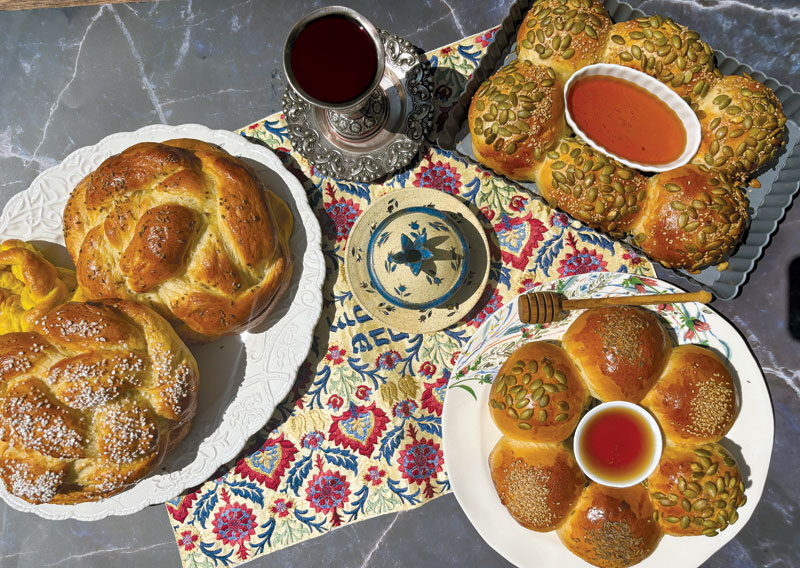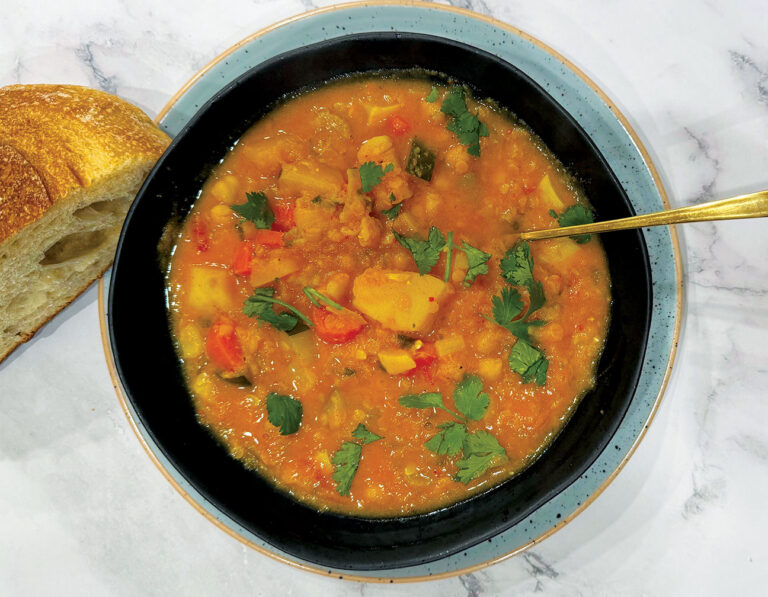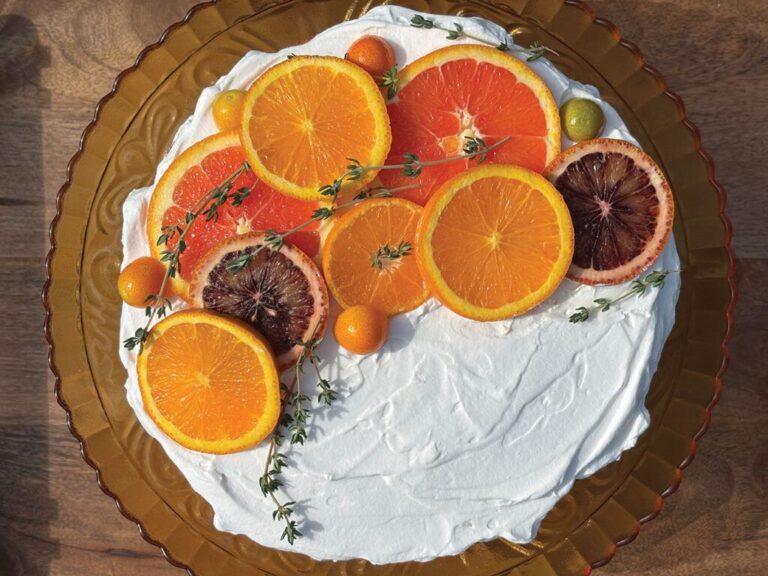A Tale of Two Challahs
May our homes always be filled with the sweet, fragrant aroma of freshly baked Challah.

When my beloved grandmother Nana Aziza passed away, my grandfather Aba Naji was 90 years old. Although he was sad and bereft, he was determined to write his memoir. Every day, he and I sat with a hot cup of cardamom and mint tea, made the same way my grandmother had always made it. He would tell me stories and I would be transported back in time, to the mighty rivers of Babylon. The stories that shape my narrative, formed in a land forever out of reach.
My grandfather grew up in Baghdad, the handsome and charming son of a busy, respected doctor. His studies at the American University in Beirut were cut short by the start of World War II and he had to return home. Soon after the Farhud in June 1941 (a violent, Nazi-inspired pogrom), his father passed away and my grandfather became responsible for his mother Emmy Lulu, his sisters Toya and Rachelle and brother Maurice.
The Iraqi government sent him south, to be a teacher in the village El Azair, where the Tomb of Ezra is located. There, he fell in love with and married my grandmother. Her father was extremely wealthy and they lived a life of relative ease. After the birth of their third child in September 1946, my grandparents returned to Baghdad, where he began working in civil engineering for the Iraqi army.
In May 1951, my grandparents made aliyah to Israel, with my seven-year-old mother and her four younger brothers. They lived in a Ma’abara, one of the wretched settlement villages hastily erected to house the large influx of Jews from Muslim lands in the Middle East and North Africa.
Soon after, my grandfather was called to Tel Aviv to be debriefed on information that he had about the Iraqi army. After rejecting an offer to work in counterintelligence, my grandfather had just enough money to catch the bus home. It was a Friday morning and everyone was getting ready for Shabbat, carrying bags filled with loaves of challah, fruits and vegetables and wine.
While 60 years had passed since that time, my grandfather was still bitter at the memory of not being able to purchase challah for his young family.
Years passed and my grandparents moved their family to Sydney. My childhood memories are dominated by beautiful Friday night dinners at their home. A long dining room table with smiling faces, a silver kiddush cup, two glorious loaves of challah and an abundance of delicious food.
As Sephardic Spice Girls, Rachel and I have been privileged to teach many classes and conduct many challah bakes. One of the organizations that we love working with is Yesh Tikva, which provides direct support, services and educational resources on infertility to the Jewish community, as well as raising awareness and sensitivity. Rachel and I are so honored to host one of their High Holy Day Challah Bakes (https://yeshtikva.org/challahbakes/). Sign up to join Yesh Tikva in the Valley on September 24 or be with us at OBKLA on September 25. —Sharon
I have an ambivalent relationship with challah. Unlike most of my Ashkenazi friends, I have zero warm and fuzzy childhood memories of the fluffy Shabbat bread.
In fact, it was only when I was in my late 20s that I even tasted challah, here in the United States.
Like nearly all Iranian Jews, I grew up watching my father say the “Ha’Motzi” blessing over two flatbreads, right before our family enjoyed a succulent Shabbat meal consisting of Persian stews and rice.
In post-revolutionary Iran in the late 1980s, one of the few moments of tranquility and joy I experienced as a child was walking to the local baker and watching in mesmerized wonder as he carefully pulled a long loaf of Barbari bread from a modest clay oven. (I feared the six-foot-reach fire of that oven almost as much as I feared the Ayatollah.)
I was tasked with asking the baker to cut the long bread in half and wrapping the ends in newspapers. It always resembled the two stone tablets of the Ten Commandments because the ends were curved and the sides were straight. I was like a young Persian Moses carrying the tablets — if Moses had been tempted to bite those holy tablets because they were so fresh and fluffy!
Indeed, the smell of that freshly baked, yeast-leavened bread, sprinkled with sesame seeds, was so mouthwatering that I couldn’t help myself from taking small nibbles as I happily walked home carrying the loaves. My six-year-old logic also deduced that the giant bread would provide cover for my head in case of a sudden missile attack in the heart of the city. I should probably mention that I lived in Teheran during the long, miserable Iran-Iraq War waged by the Ayatollah Khomeini and Saddam Hussein.
I have always taken issue with the assumption that challah is the definitive Shabbat bread for all Jewry. (Note: never, ever repeat this claim to a Yemenite grandmother!) But challah is undeniably unique and delicious. Hence, my ambivalence.
Who can resist a warm slice of challah on a chilly, 68-degree Shabbat afternoon in Southern California?
Recently, I was ecstatic (and a little fearful) when my wonderful friends and fellow Jewish Journal columnists, Rachel and Sharon, offered to help me make challah at home.
During the two-day holiday known as Chag Ha’Amazon, or Prime Day, I had purchased a Bosch mixer. I was curious to see how the machine would mix an entire five-pound bag of bread flour without overheating. In the end, my Bosch worked beautifully, making smooth, elastic dough!
Rachel and Sharon sent me their delectable challah recipe and I set out all the ingredients. They arrived at my house like two rays of Sephardic sunshine — cheerful and uplifting. If a trio of Moroccan, Iraqi and Iranian Jews can make a classic Ashkenazi Shabbat bread, I hope Ashkenazim worldwide will be open to making everything from easy homemade pitas to jachnun.
I have survived both the Ayatollah and Saddam, but I am now prepared to admit to you, dear reader, that making challah truly scared me. Yet watching the happy, confident ease with which Rachel and Sharon prepared the dough (and ran the Bosch mixer as if it was an extension of their hands) made me feel for the first time in my life that I could successfully make challah myself.
“I have survived both the Ayatollah and Saddam, but I am now prepared to admit to you, dear reader, that making challah truly scared me.“ – Tabby Refael
For this, I am indebted to them. Take a person fishing and they will eat for one day. Teach me to prepare fluffy challah with ease and joy and I will eat for much longer than is medically advised!
—Tabby Refael, Columnist, The Jewish Journal of Greater Los Angeles
Like Tabby, I too am an immigrant to the United States. I have very vivid memories of my first Ashkenazi Shabbat meal, when my family was invited to Rabbi Shulman’s home.
It was the first time I tasted matzah ball soup and I immediately fell in love. But then we were served gefilte fish. I will never forget the horror that my eight-year-old self experienced when I took that first bite. I quickly dumped that mouthful into my napkin and I have never touched gefilte fish since. It was at that meal that I tasted sweet, fluffy challah for the first time. What’s not to love?
In Casablanca, my mother would bake a traditional Shabbat bread in an oval log shape. For the Jewish holidays, she always added fennel seed to her dough, which made it especially fragrant and sweet.
In Los Angeles, she worked full time, so on Friday mornings my father would buy fresh challah from the kosher bakery on Doheny and Pico (which is now where Aish is located).
I was inspired to start baking challah when my children brought home little loaves of homemade challah from their preschool.
Over the years, I have learned the technique and quite a few tricks. It has become a therapeutic and spiritual experience for me. Eating warm homemade challah on Shabbat is a unique moment of joy and pleasure for my family.
I prefer to use yeast imported from Israel. I am careful that when I proof my yeast, the water is warm, not cold and not too hot. I add sugar and cover my bowl with a towel, then I set out the rest of the ingredients, including high gluten flour, which gives my loaves a lofty rise and that perfect chew factor. Only when the yeast has bloomed and is very foamy, do I start to make the dough.
Using a mixer allows me to make a lot of dough. I bake the challahs, then freeze the extras. (If you don’t have a mixer, kneading the dough by hand is an excellent workout and super satisfying.)
Once the dough is mixed and pulls away from the sides of the bowl, I let it sit for 5 minutes, then I turn on the mixer for another 5 minutes. I spray a large bowl with Pam and transfer the dough, then I cover it with plastic wrap and a heavy towel and let it sit for an hour. I dump the dough onto a lightly floured counter and cut it into portions, roll it into balls and leave it to sit a bit, so the dough relaxes. When braiding my challah, I oil my hands, which helps smooth the dough. For a beautiful, dark glaze, I make an egg wash by beating one egg with a tablespoon of honey to brush onto the dough.
For Rosh Hashana and for Sukkot, I decorate my challah with fennel seeds, pumpkin seeds and sunflower seeds.
May our homes always be filled with the sweet, fragrant aroma of freshly baked Challah.
—Rachel
CHALLAH
4 Tbsp active dry yeast
4 1/2 cups warm water
2 Tbsp sugar
5 lbs high gluten bread flour
1/2 cup sugar
2 Tbsp salt
3 large eggs
1/4 cup honey
1¼ cup vegetable oil
Egg Wash
1 egg and 1 Tbsp honey, beaten
Combine yeast, warm water and sugar in a glass bowl. Cover with a towel and set aside to proof for 10 minutes.
In a large bowl, combine the flour with the sugar and salt. Add the eggs, honey and oil and mix well.
Add the proofed yeast mixture to the dough and mix until all the ingredients are well incorporated. Transfer the dough to a lightly floured surface and knead until the dough is smooth and elastic. If the dough feels too sticky to handle, gradually add a little flour.
Return dough to the large bowl, cover with plastic wrap and a towel.
Set aside to rise in a warm spot for one hour.
Preheat the oven to 350°F.
Take Challah and recite the blessing (below)
Separate the dough into sections and braid into challah. Allow each challah to rise 15 minutes.
Brush with egg wash, sprinkle with toppings and bake for about 45-55 minutes, until challah is golden brown.
Allow challah to cool completely before storing.
Note: It is a mitzvah to make the blessing of Hafrashat Challah when baking 5 pounds of bread dough.
Transliteration: Baruch ata Adonai Elo-hainu Melech Ha’olam asher kid’shanu b’mitzvotav v’tziva’anu l’hafrish challah.
Translation: Blessed are You, L-rd our G-d, King of the Universe, who has sanctified us with His commandments and commanded us to separate challah.
Separate a small ball of dough, approximately one ounce, and say: “This is challah.”
Burn the challah by wrapping it in a piece of silver foil and placing in the oven.
Sharon Gomperts and Rachel Emquies Sheff have been friends since high school. The Sephardic Spice Girls project has grown from their collaboration on events for the Sephardic Educational Center in Jerusalem. Follow them
on Instagram @sephardicspicegirls and on Facebook at Sephardic Spice SEC Food.







